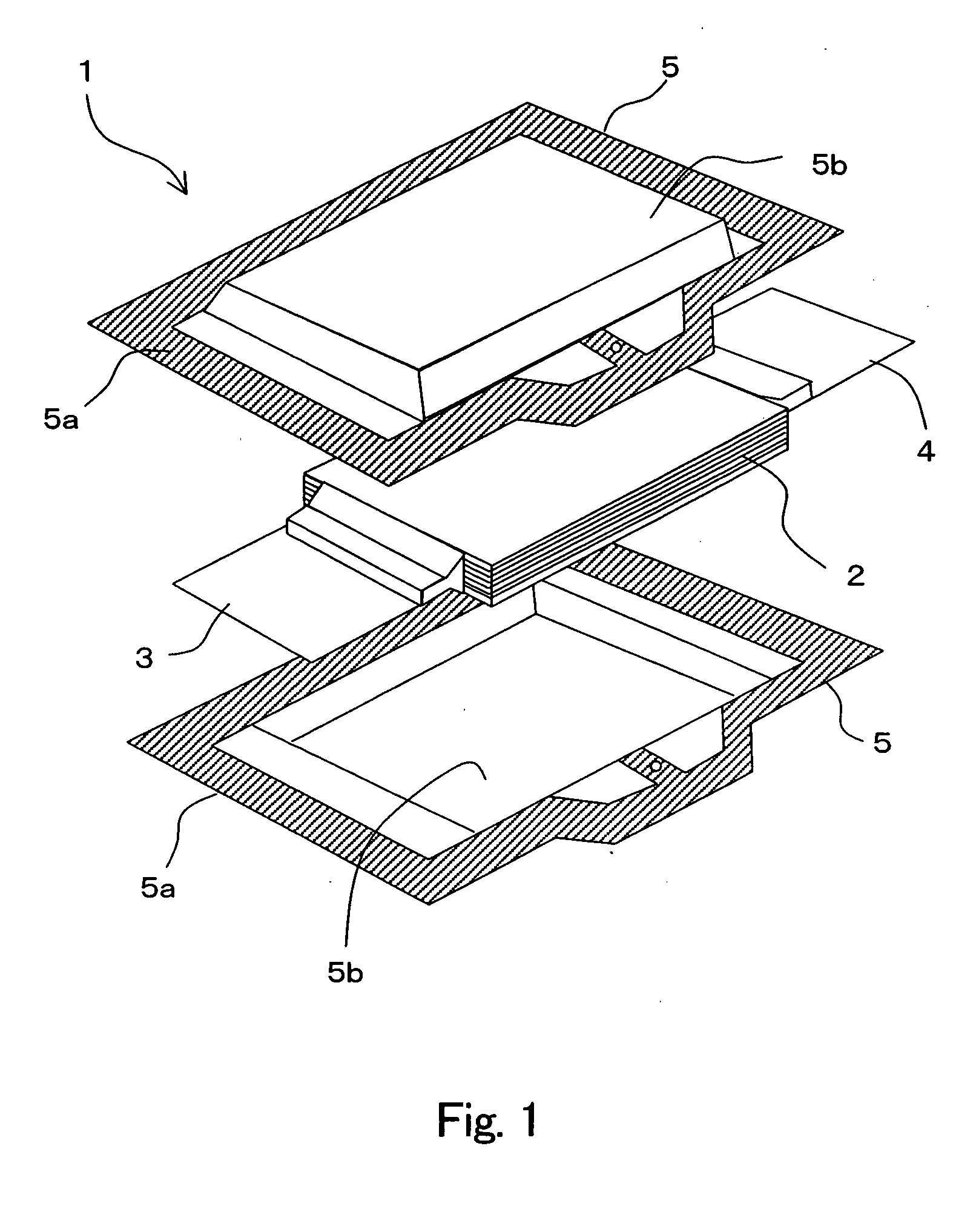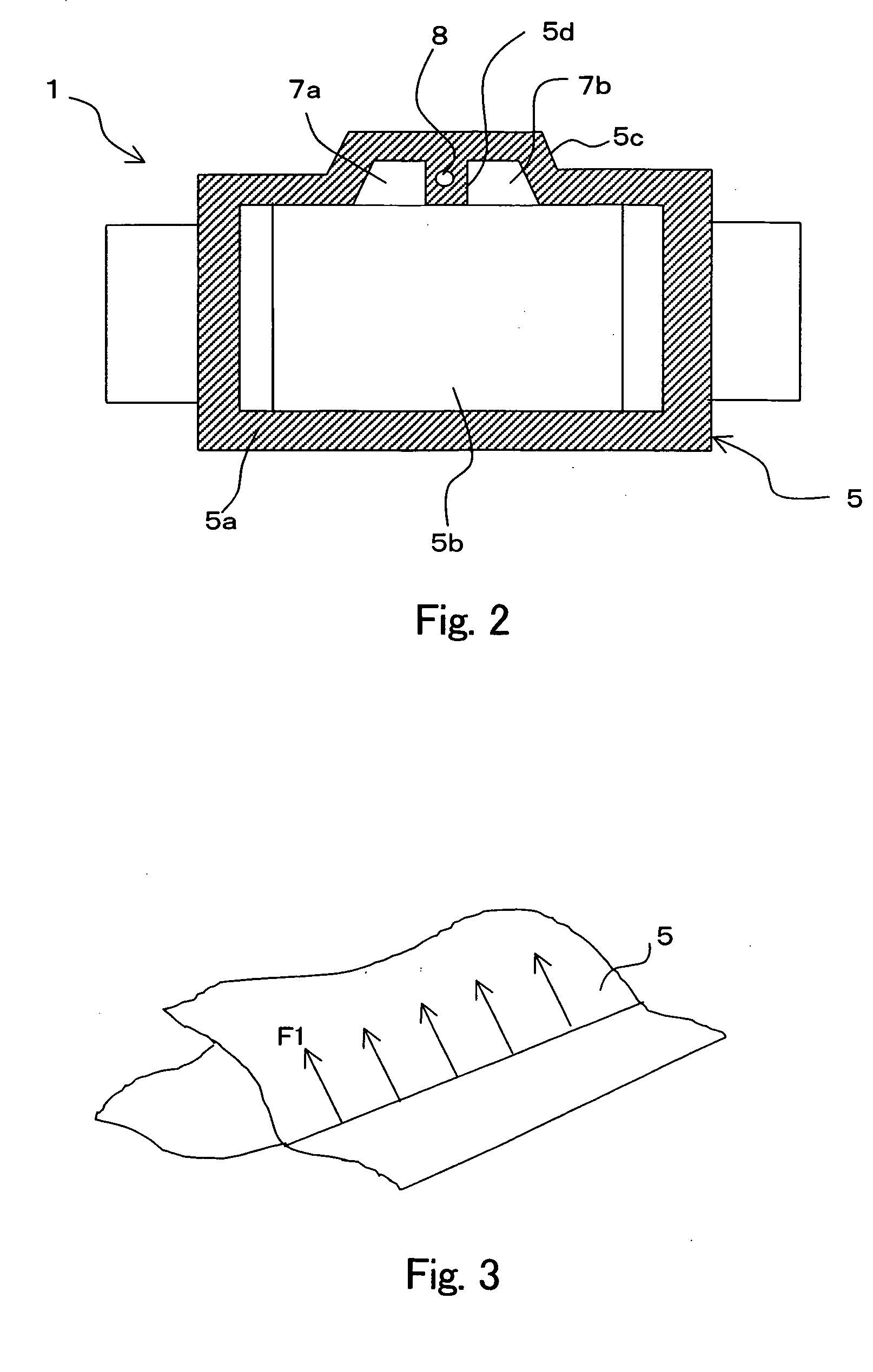Film-covered electric device having pressure release opening
a technology of electric devices and films, applied in the direction of electrical apparatus casings/cabinets/drawers, cell components, hermetically sealed casings, etc., can solve the problems of battery explosion, large gas quantity, and pressure inside the battery, and achieve the effect of reducing the sealing reliability of an electric device elemen
- Summary
- Abstract
- Description
- Claims
- Application Information
AI Technical Summary
Benefits of technology
Problems solved by technology
Method used
Image
Examples
Embodiment Construction
[0035] Referring to FIG. 1, film-covered battery 1 includes flat and substantially rectangular parallelepiped battery element 2 having a structure with a plurality of positive electrodes and negative electrodes alternately stacked, positive electrode lead 3 and negative electrode lead 4 connected with the positive electrodes and negative electrodes of battery element 2, respectively, and casing films 5 for sealing battery element 2 with positive electrode lead 3 and negative electrode lead 4 partially extending out, thus constructing film-covered battery 1 according to one embodiment of the present invention.
[0036] Battery element 2 has a stacked body wherein the plurality of positive electrodes and negative electrodes alternately stacked with separators intervened, the electrodes being composed of metallic foils both sides of which respective electrode materials are applied onto. The stacked body, including the positive electrodes, negative electrodes and the separators, is impreg...
PUM
| Property | Measurement | Unit |
|---|---|---|
| atmospheric pressure | aaaaa | aaaaa |
| width | aaaaa | aaaaa |
| thickness | aaaaa | aaaaa |
Abstract
Description
Claims
Application Information
 Login to View More
Login to View More - R&D
- Intellectual Property
- Life Sciences
- Materials
- Tech Scout
- Unparalleled Data Quality
- Higher Quality Content
- 60% Fewer Hallucinations
Browse by: Latest US Patents, China's latest patents, Technical Efficacy Thesaurus, Application Domain, Technology Topic, Popular Technical Reports.
© 2025 PatSnap. All rights reserved.Legal|Privacy policy|Modern Slavery Act Transparency Statement|Sitemap|About US| Contact US: help@patsnap.com



